Artur Ziviani
National Laboratory for Scientific Computing
A Survey on Embedding Dynamic Graphs
Jan 04, 2021



Abstract:Embedding static graphs in low-dimensional vector spaces plays a key role in network analytics and inference, supporting applications like node classification, link prediction, and graph visualization. However, many real-world networks present dynamic behavior, including topological evolution, feature evolution, and diffusion. Therefore, several methods for embedding dynamic graphs have been proposed to learn network representations over time, facing novel challenges, such as time-domain modeling, temporal features to be captured, and the temporal granularity to be embedded. In this survey, we overview dynamic graph embedding, discussing its fundamentals and the recent advances developed so far. We introduce the formal definition of dynamic graph embedding, focusing on the problem setting and introducing a novel taxonomy for dynamic graph embedding input and output. We further explore different dynamic behaviors that may be encompassed by embeddings, classifying by topological evolution, feature evolution, and processes on networks. Afterward, we describe existing techniques and propose a taxonomy for dynamic graph embedding techniques based on algorithmic approaches, from matrix and tensor factorization to deep learning, random walks, and temporal point processes. We also elucidate main applications, including dynamic link prediction, anomaly detection, and diffusion prediction, and we further state some promising research directions in the area.
Efficient Information Diffusion in Time-Varying Graphs through Deep Reinforcement Learning
Nov 27, 2020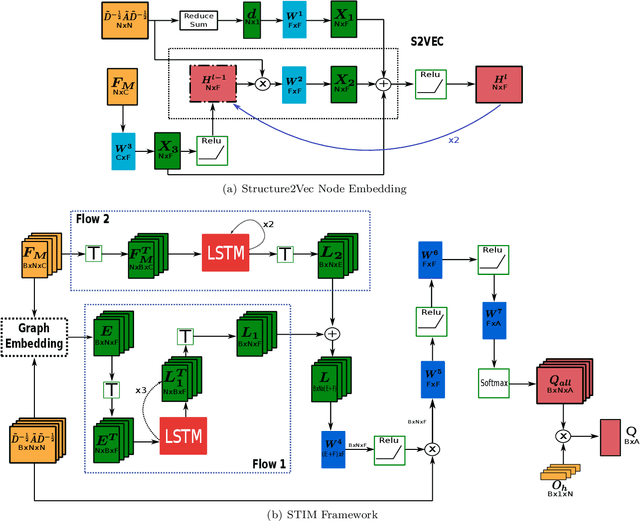
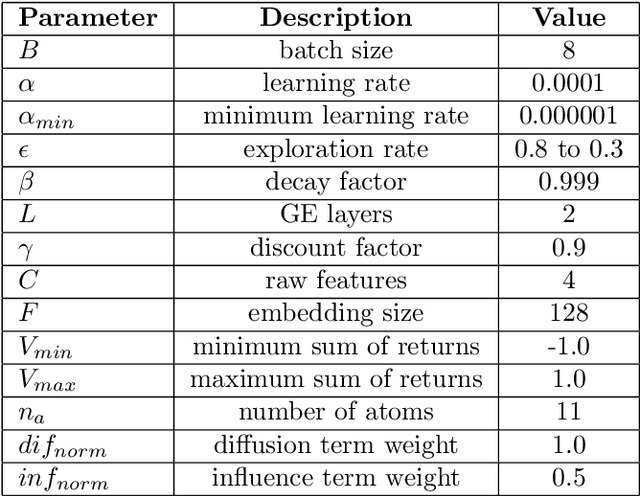
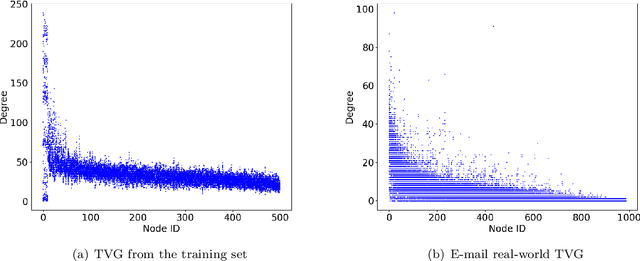

Abstract:Network seeding for efficient information diffusion over time-varying graphs~(TVGs) is a challenging task with many real-world applications. There are several ways to model this spatio-temporal influence maximization problem, but the ultimate goal is to determine the best moment for a node to start the diffusion process. In this context, we propose Spatio-Temporal Influence Maximization~(STIM), a model trained with Reinforcement Learning and Graph Embedding over a set of artificial TVGs that is capable of learning the temporal behavior and connectivity pattern of each node, allowing it to predict the best moment to start a diffusion through the TVG. We also develop a special set of artificial TVGs used for training that simulate a stochastic diffusion process in TVGs, showing that the STIM network can learn an efficient policy even over a non-deterministic environment. STIM is also evaluated with a real-world TVG, where it also manages to efficiently propagate information through the nodes. Finally, we also show that the STIM model has a time complexity of $O(|E|)$. STIM, therefore, presents a novel approach for efficient information diffusion in TVGs, being highly versatile, where one can change the goal of the model by simply changing the adopted reward function.
Approximating Network Centrality Measures Using Node Embedding and Machine Learning
Jun 29, 2020

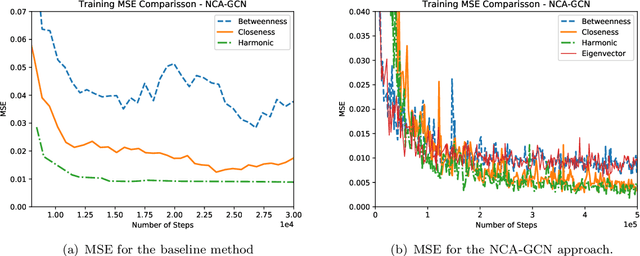
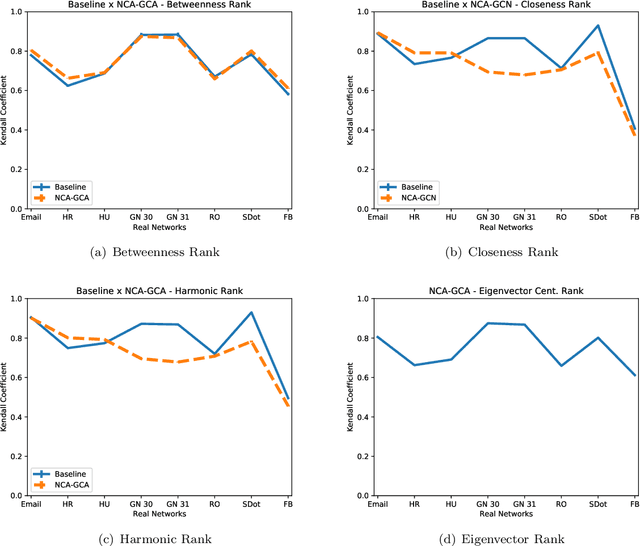
Abstract:Analyzing and extracting useful information from real-world complex networks has become a key challenge due to the their large sizes such networks achieve nowadays. For instance, depending on the intended node centrality, it becomes unfeasible to compute it for such large complex networks due to the high computational cost. One way to tackle this problem is by developing fast methods capable of approximating the network centralities. In this paper, we propose an approach capable of efficiently approximating node centralities for large networks using Neural Networks and Node Embedding echniques. We thus call our approach the Network Centrality Approximation using Graph Convolutional Networks (NCA-GCN) model.In contrast to recent related work, the NCA-GCN model requires only the degree centrality of each node in order to predict any other centrality. We show that the NCA-GCN model works well in different node centralities for different network sizes.
DJEnsemble: On the Selection of a Disjoint Ensemble of Deep Learning Black-Box Spatio-temporal Models
May 25, 2020



Abstract:In this paper, we present a cost-based approach for the automatic selection and allocation of a disjoint ensemble of black-box predictors to answer predictive spatio-temporal queries. Our approach is divided into two parts -- offline and online. During the offline part, we preprocess the predictive domain data -- transforming it into a regular grid -- and the black-box models -- computing their spatio-temporal learning function. In the online part, we compute a DJEnsemble plan which minimizes a multivariate cost function based on estimates for the prediction error and the execution cost -- producing a model spatial allocation matrix -- and run the optimal ensemble plan. We conduct a set of extensive experiments that evaluate the DJEnsemble approach and highlight its efficiency. We show that our cost model produces plans with performance close to the actual best plan. When compared against the traditional ensemble approach, DJEnsemble achieves up to $4X$ improvement in execution time and almost $9X$ improvement in prediction accuracy. To the best of our knowledge, this is the first work to solve the problem of optimizing the allocation of black-box models to answer predictive spatio-temporal queries.
 Add to Chrome
Add to Chrome Add to Firefox
Add to Firefox Add to Edge
Add to Edge